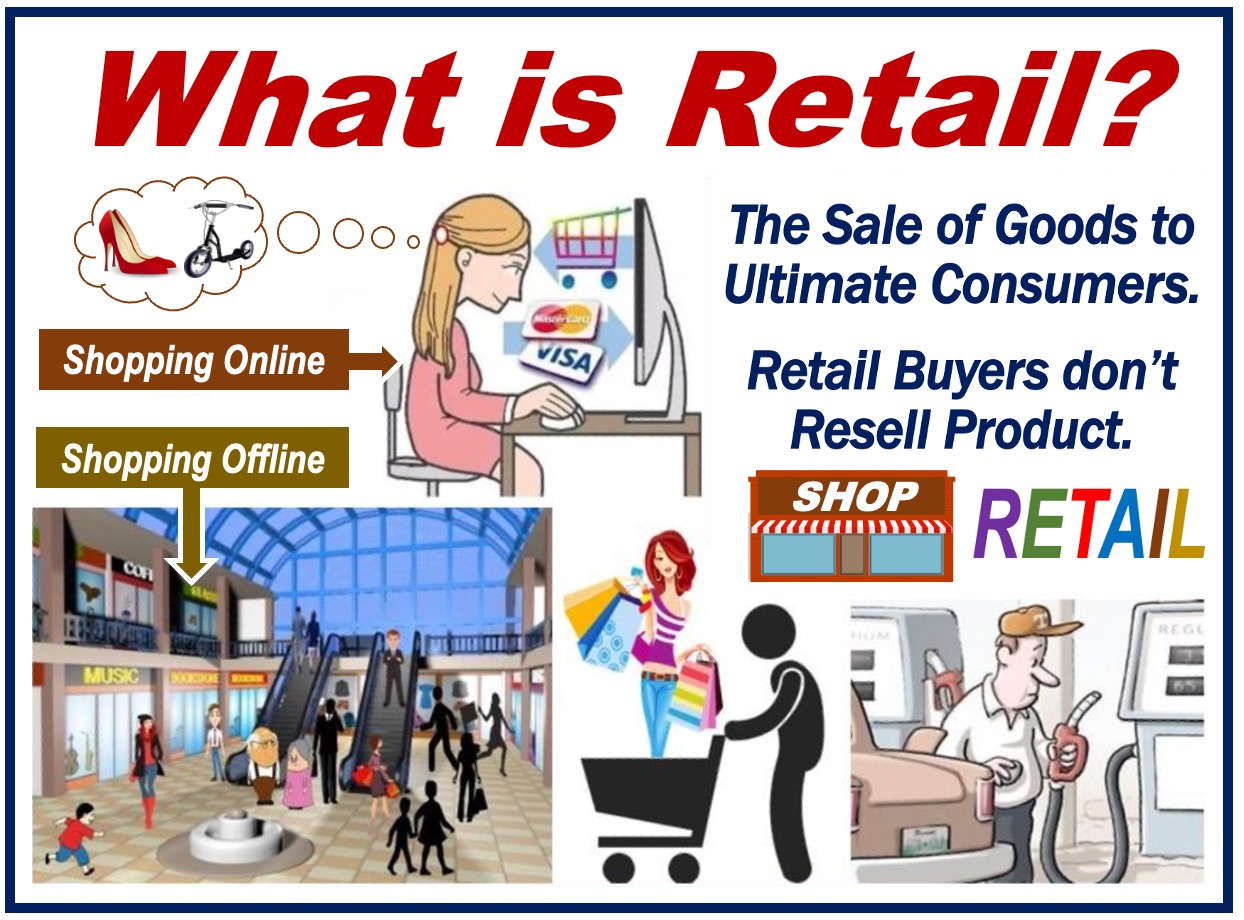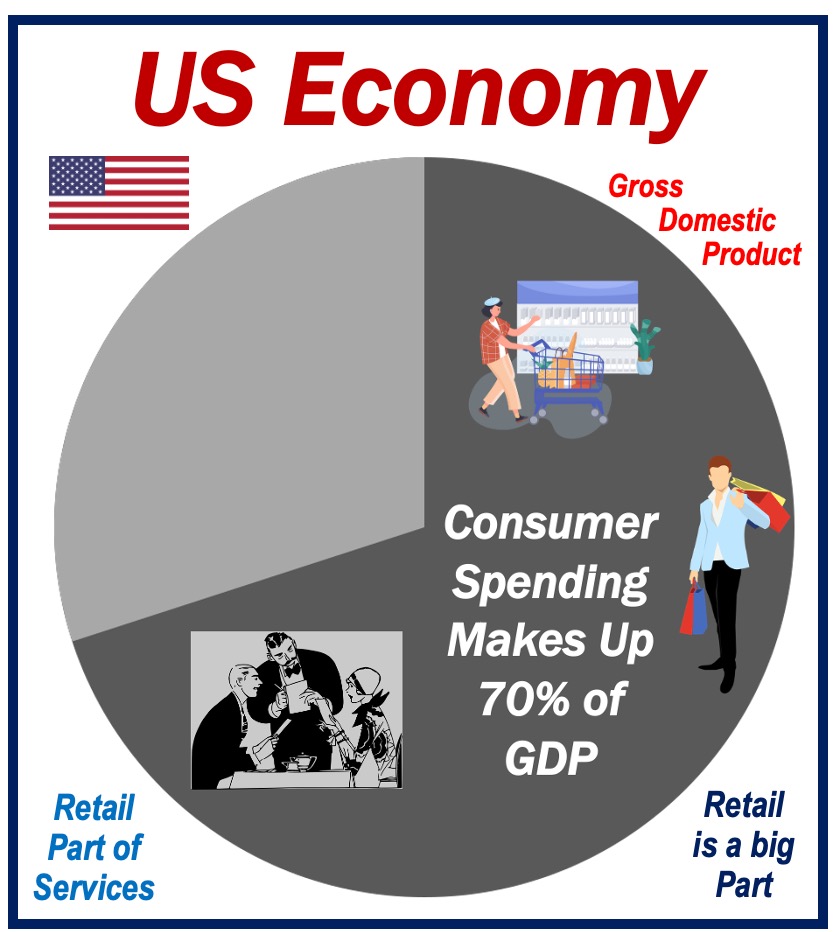Every month, the U.S. Department of Commerce issues a report on the state of retail activity in the country. Retail sales data are an important economic indicator as they show the extent of consumer demand both for non-durable and durable commodities.
There are 13 categories of retail sales that are included in the Advance Monthly Retail Trade Report. The categories range from motor vehicle & parts dealers to clothing & clothing accessories. For instance, the June 2022 retail sales report released on July 15, 2022, showed a 1% increase in retail sales from $673.9 billion in May to $680.6 billion reported in June.

What Are Retail Sales?
Retail sales refer to the dollar value of sales reported by retail and food service companies. The Department of Commerce mails out the Monthly Retail Trade Survey (MRTS) forms to targeted retail establishments which they fill and mail back.
The businesses sampled, about 5,500 firms, are those that sell merchandise and associated services to consumers at the end of the supply chain. The sales data collected includes:
- Brick and mortar merchandise sales whether made in cash or credit.
- Online sales that are placed or negotiated through mobile devices, over the internet, extranet, electronic mail, EDI network, and similar systems.
- Revenue from wholesale sales and services made by retail establishments.
- The assessed value of trade-ins used by customers to partially offset payment for merchandise.
The motor vehicle & parts dealers’ category is the top retail sales driver accounting for almost 19% of the total retail sales. Following closely is the non-store retailers’ category comprising electronic shopping and mail-order houses at about 15% of retail sales.
Importance of Retail Sales in the US Economy

The US retail industry is an important cog in the economy. It is a barometer of the willingness and preparedness of households to spend. Here are some of the use cases for retail sales data in the economy.
-
Helps to Estimate Gross Domestic Product (GDP)
Consumer spending accounts for roughly 70% of US GDP. About 40% of this consumption is made up of retail sales. Using these averages and the reported retail sales figures, the Bureau of Economic Analysis (BEA) then estimates the GDP and health of the economy. Rising retail sales numbers indicate an expanding economy while falling retail sales numbers signal a contracting economy.
-
Gives a Glimpse of Future Employment
The Bureau of Labor Statistics is usually keen on retail sales data as this information helps to get an insight into labor productivity. Decreasing retail sales numbers signal a slowdown in retail business activity hence a cut back on employment.
On the other hand, if an uptrend in retail figures persists for multiple successive quarters, the labor market could be forced to tighten in the not-too-distant future.
-
Helps to Project Business Earnings Estimates
Retail sales numbers are positively correlated with individual corporate earnings. When the Advance Monthly Retail Trade Reports for any given quarter show growth in retail sales, chances are high that the respective quarterly corporate earnings will also turn positive.
Market averages such as the S&P 500, Nasdaq, and the Dow, usually move in tandem with investor sentiments which are in turn driven by data such as retail sales. Investors closely watch stocks such as Target (TGT), Macy’s (M), and Walmart (WMT) when retail data is released.
-
Informs Government Policy
The Federal Reserve uses several tools to align its monetary policy with the direction of the economy and other government priorities. Currently, the Fed is looking at taming the rising inflation and reducing it to its annual target of 2%.
A rise in retail sales is often a precursor to rising inflation. Using retail numbers and other economic data, the Fed can move to tighten the economy by raising rates. On the other hand, if it wants to spur the economy, retail sales form part of the economic indicators the Fed uses to make decisions.
How To Improve and Maintain Retail Sales
There are several measures retailers implement to boost retail sales. Here is a quick overview of what can be done.
-
Retail Establishments
The buck almost always stops with retailers. There are numerous initiatives firms can roll out to enhance their sales activity. Here are some of them.
- Provide personalized customer experience including custom marketing messages and offers
- Train and equip staff with the right knowledge and tools to assist customers
- Have sufficient inventory to ensure every order is fulfilled
- Improve the checkout experience including customer data safety
- Offer rewards and loyalty programs to boost repeat business
Conclusion
Retail sales are a critical economic indicator. An increase in activity reported by retail business establishments signals economic expansion, an uptick in employment, and a healthy economic environment. The stock market also closely monitors the direction of retail sales to inform earnings estimates and investor sentiments. With the right strategies, firms can enhance their retail sales and profitability.
Interesting related article:

